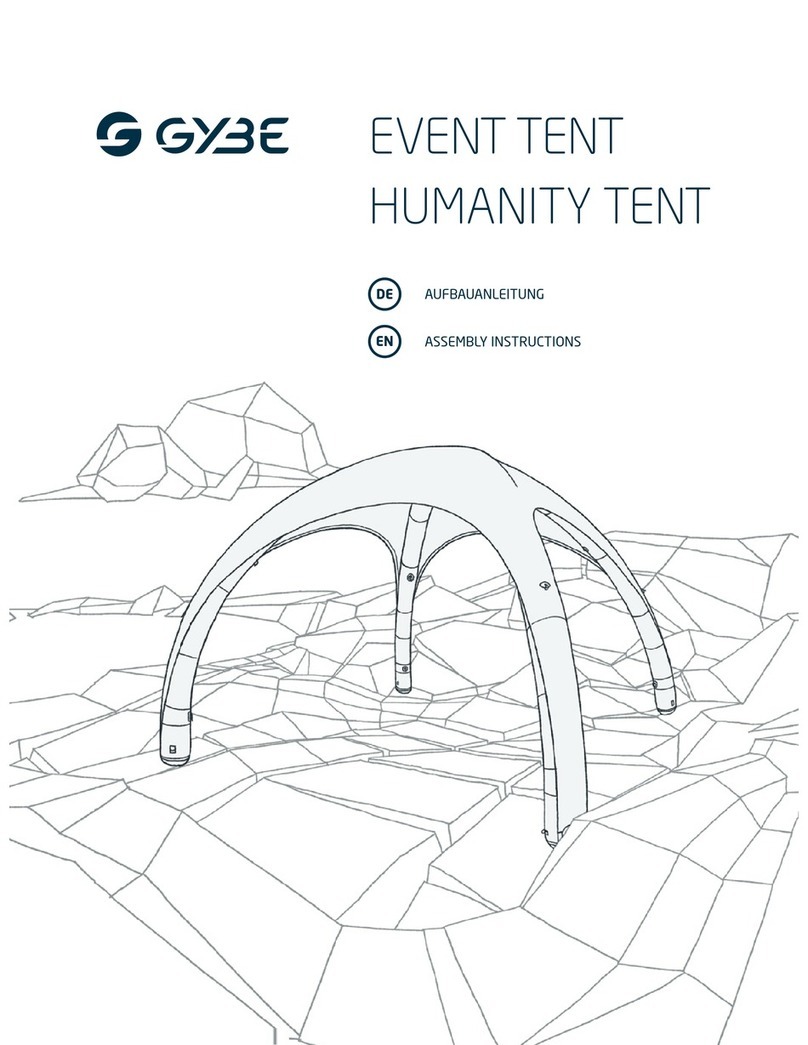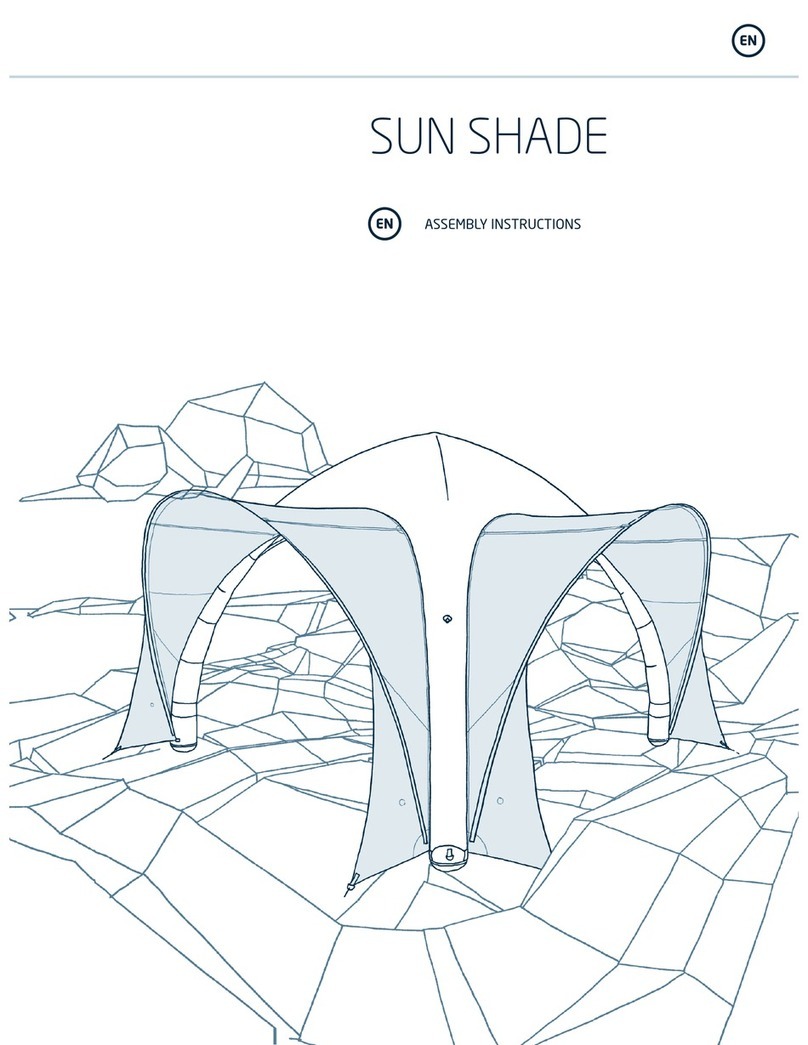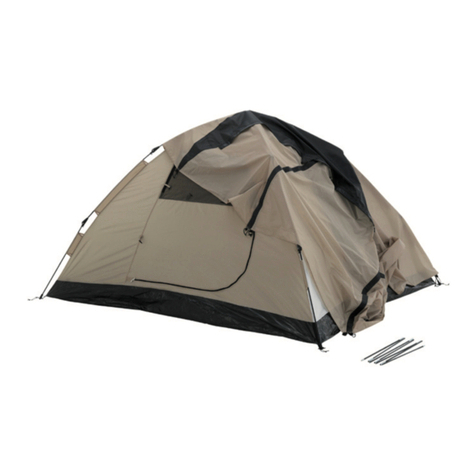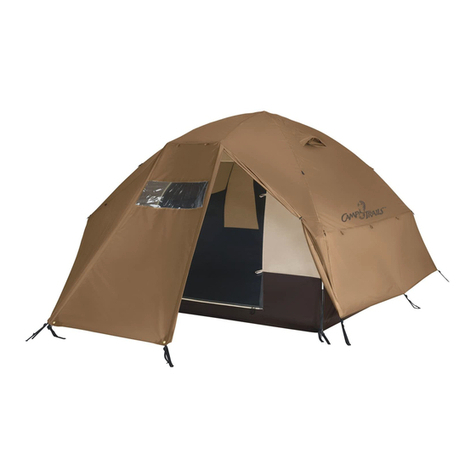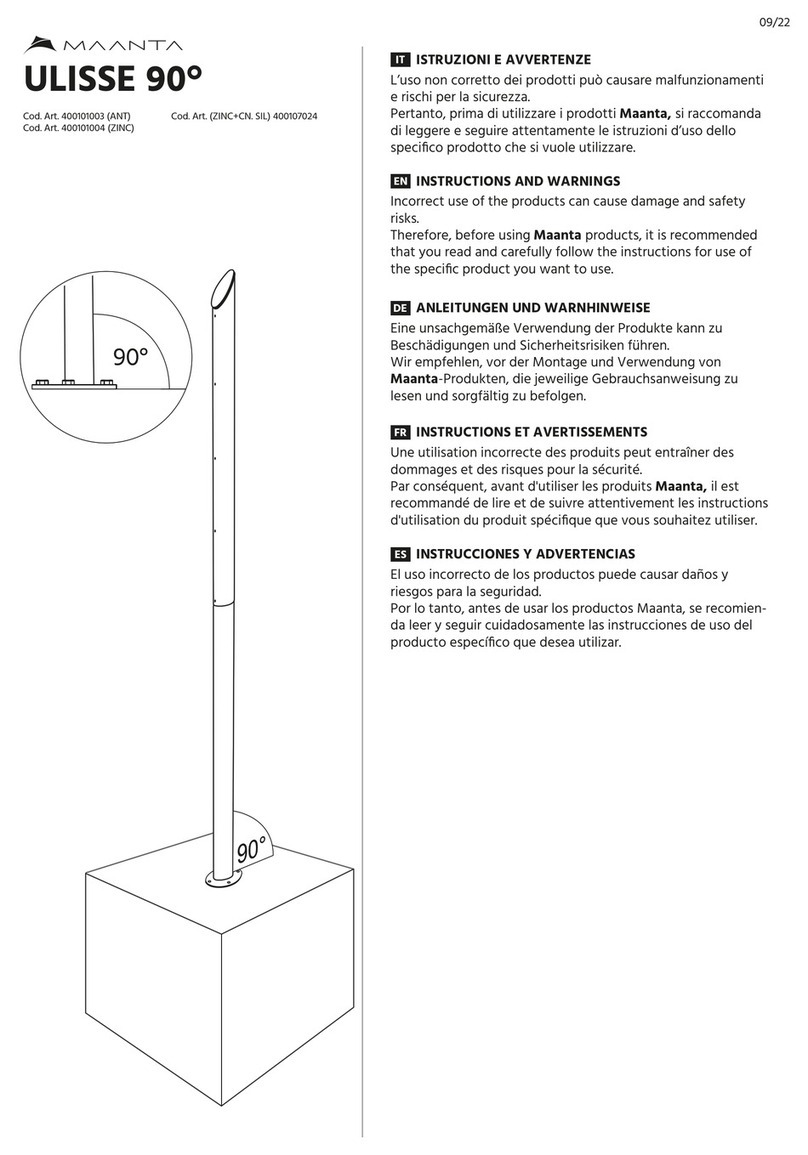3
INSTRUCTIONS FOR USE AND SAFETY WARNINGS EN
KEEP AWAY FROM SOURCES OF HEAT
Keep the Tent away from sources of heat and open flames.
Please do not place any sources of heat directly under the roof
because the materials can melt at high temperatures.
PROTECT FROM STRONG WINDS
The GYBE Humanity Tent should not be used at wind speeds over 5 Beaufort (21
knots / 24 mph).
The tent can catch wind even without having the side panels in place.
With winds in excess of 13 mph, water- and sandbags do not offer sufficient weight.
Tent pegs or stakes must be used. (Stakes are not included).
In order to prevent the tent from being moved by gusts of wind, place at least one side
panel on the wall facing the wind. That way the wind won‘t be able to enter the tent.
→ GYBE does not accept any liability for improper use of GYBE products.
CARE INSTRUCTIONS
STORE IN A DRY PLACE
Never store the tent when it is wet.
Be sure the tent is stored dry between 0 – 30 °C. (32 – 90° F.).
CLEAN CAREFULLY
Rough, dry dirt is best removed with a fine hand brush or a wet cloth.
Crusted residues with sharp edges can damage the tent fabric.
The materials should only be cleaned with clear water or with highly diluted detergent.
Handle printed materials especially carefully. If you have any doubts, check on an
inconspicuous spot if the cleaning agent reacts corrosively with the tent surface.
Some of the tent materials are coated with water-resistant and flame-retardant layers.
Strong scrubbing or solvent-containing cleaning agents can ruin these layers!
→ GYBE does not accept any liability for improper use of GYBE products.






